6 Slippery Elm Benefits For Health, How To Take, & Side Effects
Know how slippery elm can ease a sore throat, GERD, and many health conditions.
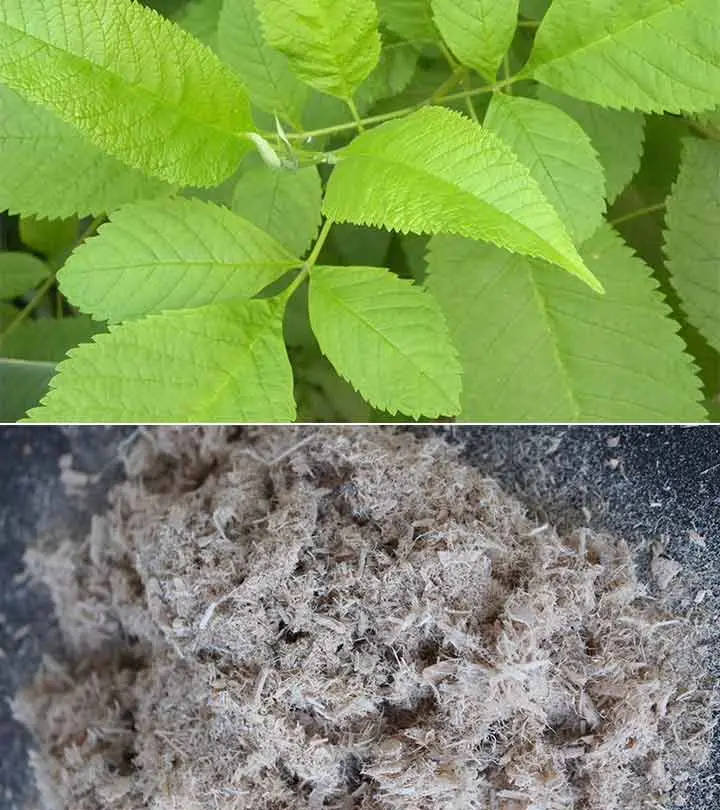
Image: Shutterstock, iStock
The benefits of slippery elm were being valued long before the emergence of antibiotics. This glue-like substance was used in treating many acute and chronic disorders, including gastrointestinal issues.

The active molecules in this ingredient also relieve insect bites and repair the gut lining, intestinal walls, throat, and skin. It has a slippery consistency in its bark that resembles glue. Slippery elm is a rich source of polyphenols and sugars that are responsible for most of its benefits. Learn more about them in the article below.
 Know Your Ingredient: Slippery Elm
Know Your Ingredient: Slippery ElmWhat Is It?
A tree native to America and Canada containing medicinal properties in its inner bark.
What Are Its Benefits?
It is good for gastrointestinal health and may help treat psoriasis, constipation, sore throat, and general wounds and cuts.
Who Can Consume It?
Anyone who is not allergic can consume it.
How Often?
It may be consumed daily.
Caution
It may decrease the effectiveness of orally-administered medications, due to its ability to bind to various drugs. Hence, consume it before or after 2 hours of any medicine.
In This Article
What Is Slippery Elm?
Slippery elm (Ulmus rubra) a.ka. red elm, soft elm, or Indian elm, is a medium-sized forest tree native to the woods, streams, and hills of Northeastern Canada, Florida, Texas, and parts of Central America (1), (2).
It gets its name from the whitish, gummy, inner bark. It feels chewy and slippery when ingested. The redness of the inner bark gives it the scientific name “rubra” (1), (2), (3).
This slippery, chewy feel is because of the mucilage or glue-like substance in its bark, which swells (about 60-40 times) when soaked in water. It can be used as a soothing ointment/gel and has several therapeutic benefits (4), (5).
The elm’s mucilage protects the inner lining of the gastrointestinal tract from excess gastric juices and pathogens. It may help treat conditions like hyperacidity, GERDi A chronic condition that develops when bile or stomach acid enters the esophagus and irritates the cell walls. , leaky gut, sore throat, etc.
The leaves, bark, and fruit of this tree are also being studied for their medicinal values. Ironically, slippery elm has rough and pale leaves.
In combination with herbs like triphala, licorice, etc., this plant extract is an Ayurvedic remedy and a potent prebiotic (4). In the following section, you will discover the different ways this mucilage can heal you. Scroll on!
Key Takeaways
- Slippery Elm has a gummy, whitish inner bark.
- It swells when soaked in water and feels chewy and slippery when ingested.
- Consuming slippery elm may treat digestive problems like GERD, diarrhea, constipation, and irritable bowel disease.
- It may help manage psoriasis.
- Take 1-2 tablespoons of slippery elm bark powder after meals with a glass of water.
What Are The Benefits Of Slippery Elm?
Wondering what slippery elm is good for? The glue-like secretions effectively control disorders of the GI tract. Slippery elm may also help treat a sore and itchy throat, diarrhea, and other inflammatory conditions. Check out the benefits of slippery elm for women below.
1. Relieves Gastrointestinal Esophageal Reflux Disease (GERD)

GERD arises when the muscles (sphincter) at the junction of the food pipe (esophagus) and stomach get inflamed. This causes the stomach acids to flow back into the esophagus, giving you a heartburn.
You may also experience severe acid reflux and a burning sensation in your gut and chest. Such cases need medication that relaxes the sphincter muscles and tones down the inflammation present. Remedies incorporating herbs like slippery elm have shown great relief (6).
Slippery elm can be combined with marshmallow to make cold infusions or a water-based gruel (6). Mix 1-2 tablespoons of the elm’s powder in a cup of water and take it after meals and before bedtime. Such mixtures work as demulcentsi Ingredients or drugs that form a shield-like film on the mouth’s mucous membranes to soothe irritation and mild pain. to soothe inflamed gut muscles (7).
 Quick Tip
Quick Tip2. Eases Sore Throat, Cough

Native Americans used tea made from the inner bark of this herb to heal sore throats, coughs, mouth ulcers, and inflammation of the pharynx (pharyngitis). Slippery elm is often found in lozenges, softgels, and cough medications. A study published in the Journal of Investigational Biochemistry explored the use of slippery elm, an herbal medicine derived from the inner bark of the slippery elm tree, as a complementary and alternative treatment for laryngeal irritation. Despite its common use for treating upper airway inflammation, such as laryngitis, the study highlights that most clinicians are unfamiliar with its biological effects and that there is little scientific evidence supporting its efficacy (5), (8).
Its mucilage soothes throat inflammation caused due to flu, allergies, or infections. Slippery elm stimulates the cell lining of your throat to produce more mucus (5), (8).
Elm extracts have flavonoids, quinones, alkaloids, triterpenes, and polyacetylates, which are responsible for this demulcent effect (9).
3. Manages Irritable Bowel Disease (IBD)
IBD describes two distinct chronic conditions: ulcerative colitis (UC) and Crohn’s disease (CD). UC primarily affects the colon, whereas CD may involve any portion of the GI tract from the mouth to the anus. These conditions make IBD extremely debilitating (10).
The antioxidants and anti-inflammatory agents from alternative herbal medicine have effectively controlled its severity. Slippery elm, tormentil, Mexican yam, licorice, aloe vera, and curcumin are a few options that have been successfully tested in this regard(10), (11).
Most of these ingredients, including slippery elm, exhibit potent antioxidant activity. They scavenge the free radicals produced by inflamed gut cells. Colon biopsies from patients with UC show reduced free radical release after this herbal treatment (11), (12).
4. May Control Psoriasis

Psoriasis is a chronic skin disease characterized by sharply defined, red patches covered with a silvery, flaky surface. What causes this condition is still unclear. Weather, stress, and genetic factors may make people susceptible to psoriasis (13).
Since there’s no known cure yet, modern research is trying to improve the quality of life in these patients. Ancient medicine prescribes the use of anti-inflammatory herbs, including chamomile, aloe vera, slippery elm, flaxseed oil, tea tree oil, and turmeric to deal with psoriasis. Slippery elm may hydrate your skin (13), (14).
The elm may also prevent the psoriatic patches from itching and chafing. That’s why yellow saffron and slippery elm herbal infusion/tea has shown positive outcomes in several studies (13), (14), (15), (16).
5. Improves Diarrhea And Constipation

A tea brewed from the inner bark of slippery elm was used as a laxative by the Native Americans. It is also a diuretic, thereby increasing water and salt excretion from your body. These properties may help one deal with constipation and hemorrhoidsi Also known as piles, a disorder in which veins of the rectum and anus are inflamed and enlarged, causing discomfort and bleeding. (5).
This plant tones down gut inflammation. Having its infusions controls diarrhea, as per ancient medicine and recent research (5).
Dilute one teaspoon of slippery elm powder/extract in warm water. Mix well and drink at room temperature for relief (17).
 Quick Tip
Quick Tip6. Treats Wounds, Cuts, And Bites

The mucilage in slippery elm is used to treat skin ailments. The bark is powdered to make poultices. It is said that settlers, tribes, and soldiers used these poultices to treat wounds, cuts, boils, and insect bites (5), (18), (19). Hence it is efficient for wound healing.
It acts as an emollient by smoothening and softening your skin. The slippery elm mucilage quickly swells into a gooey mass when mixed with water. It can, therefore, work on dry or mildly inflamed skin (19).
 Did You Know?
Did You Know?Food For Thought
- Slippery elm is commonly consumed by pregnant and lactating women across the world. Other herbs that are considered safe during breastfeeding include ginger, cranberry, ginseng, dandelion, milk thistle, gingko biloba, garlic, fenugreek, dong quai, senna, and licorice (20).
- This herb treats cold and cough, and its tea was given to women for easy and smooth labor (5), (13).
- Most women tend to self-medicate during pregnancy or nursing. In fact, studies report that medical practitioners and midwives did not suggest the use of these herbs to their patients (20).
- Slippery elm has not shown severe toxic/adverse effects in these cases. However, it is recommended that you take it (or any herbal supplement) only on medical advice.
Aren’t these slippery elm bark benefits for women amazing? The medicinal properties of this herb can be attributed to its phytochemicals. These polyphenols can scavenge free radicals. They also reduce the levels of inflammatory compounds that may cause the above-listed conditions. Find more details below.
Phytochemical Composition Of Slippery Elm
The inner bark of slippery elm contains oleanolic acid, ursolic acid, betulinic acid, uvaol, botulin, ß-carotene, ß-sitosterol, and citrostadienol (9).
It has a high content of polysaccharides/complex sugars. D-galacturonic acid, L-rhamnose, and galactose residues predominantly form the mucilage. Starch, gums, pectin, and lignin are also abundant in this herb (4), (21).
These unique molecules can alter your gut microbes. The polyphenols enhance your immunity. Hence, slippery elm is known to aid in digestion.
This was all about the benefits of slippery elm bark and its phytochemical composition. But how do you use it? Where can it be found? Is it safe to take slippery elm every day? Let us find out.
How To Take Slippery Elm
Take 1-2 tablespoons of slippery elm bark powder in a glass of water after meals and before bedtime. This could soothe GERD and other related gastric troubles (22).
You can find dried slippery elm bark powder easily on the market. This powder can also be added to your tea while brewing.
Slippery elm comes in several forms:
- Powder: Stir 1-2 tablespoons into water or tea.
- Capsules: Follow the dosage instructions on the package.
- Lozenges: Use them as needed for relief from throat discomfort.
- Tea: Brew using bark pieces or powder.
- Cream/Ointment: Apply as directed for skin or external use.
Consuming slippery elm tea is an easy way for you to try. Learn how to make it in the next section.
Slippery Elm Tea Recipe
You Will Need
A tablespoon of slippery elm bark (you can use the bark pieces or powder)
A cup of water
Process
- Heat the water until it boils.
- Keep the slippery elm bark in a mug or teapot.
- Add the boiled water to the teapot to ensure it mixes with the slippery elm bark.
- Cover the teapot and let the blend steep for 10 to 15 minutes.
- You may strain the mixture using a fine mesh sieve or a tea strainer to remove the bark particles.
- Enjoy your warm tea. You can also add honey or a slice of lemon for flavor.
Be Well My Friends, a blogger, spoke about how they consume slippery elm daily for her health. They said, “I usually eat slippery elm with a honey-sweetened candy that I make with sesame seeds. Then after about a half hour, I chug two shots of coconut kefir (approximately 2 tablespoons) or eat some coconut yogurt (i).
But is it safe to take slippery elm every day, given its wild origin? Are there any risks linked to its intake?
What Are The Side Effects And Risks Of Taking Slippery Elm?
Herb-drug interactions
have been commonly observed and studied. Slippery elm (or its supplements) binds to various drugs. They should not be taken together (23).
It is best to take this herb at least 2 hours before/after any drug intake (23). The elm mucilage may alter the absorption/impact of orally-ingested drugs.
However, there is not a lot of literature explaining the side effects of slippery elm. Most lab trials show almost no toxicity.
Although folklore recommends the use of slippery elm in pregnant and lactating women, there is insufficient scientific evidence supporting its safety.
Therefore, consult your healthcare provider about this herb. Understand its safety and follow the dose prescribed for you.
Infographic: How To Take Slippery Elm and Dosage
Slippery elm is known for its medicinal properties. It is widely used to manage many acute and chronic disorders. It also offers an array of benefits when taken. It can be taken in various forms to manage many health ailments.
The following infographic provides information about various forms of slippery elm suitable for consumption and dosage. Check it out!
Some thing wrong with infographic shortcode. please verify shortcode syntax
Slippery elm is commonly used in traditional medicine to address digestive issues. Its inner bark is rich in mucilage and has excellent healing properties. The benefits of slippery elm can be attributed to its active compounds, such as sugars and polyphenols. There is some evidence that slippery elm may relieve GERD and IBD and treat sore throat, wounds, and psoriasis. However, slippery elm supplements may interfere with the effectiveness of other medications. Also, there are no sufficient scientific studies to support the use of slippery elm in pregnant and lactating women. Hence, consult your healthcare provider before using this natural remedy.
If you wish to give complementary medicine a shot, talk to your doctor about slippery elm. For your safety, have this herb only if prescribed/advised. Do not self-medicate.
Leave your feedback about this read and ingredient in the box below.
Frequently Asked Questions
Can slippery elm damage the liver?
Yes, slippery elm may damage the liver if taken in excess for a long duration. Hence, its intake should be limited.
Is slippery elm prebiotic?
Yes, slippery elm exhibits prebiotic properties. It promotes gut health by supporting the growth of beneficial bacteria in the gut.
Does slippery elm help with weight loss?
Slippery elm may aid in weight loss by controlling blood sugar levels. (Uncontrolled blood sugar levels may contribute to weight gain). However, there is only limited research in this regard.
Does slippery elm help with bloating?
Yes, slippery elm helps in managing bloating, abdominal pain, and gastrointestinal discomfort in people with irritable bowel syndrome.
Illustration: Slippery Elm Benefits For Health, How To Take, & Side Effects

Image: Stable Diffusion/StyleCraze Design Team
Delve into the ongoing debate between natural hair and relaxed hair. Check out this video to understand the pros and cons of each style and decide for yourself which one is the best for you.
Personal Experience: Source
StyleCraze's articles are interwoven with authentic personal narratives that provide depth and resonance to our content. Below are the sources of the personal accounts referenced in this article.
(i) Slippery Elm Bark and Tissue Repairhttps://bewellmyfriends.blogspot.com/2014/01/slippery-elm-bark-and-tissue-repair.html
References
Articles on StyleCraze are backed by verified information from peer-reviewed and academic research papers, reputed organizations, research institutions, and medical associations to ensure accuracy and relevance. Read our editorial policy to learn more.
- Slippery Elm, NewCROP, Purdue University.
https://hort.purdue.edu/newcrop/HerbHunters/slipperyelm.html - SLIPPERY ELM, Know Your Trees, L. H. Bailey Hortorium, Cornell University.
http://bhort.bh.cornell.edu/tree/slipperyelm.htm - SLIPPERY ELM, Field Guide, Missouri Department of Conservation, State of Missouri.
https://mdc.mo.gov/discover-nature/field-guide/slippery-elm - Prebiotic Potential of Herbal Medicines Used in Digestive Health and Disease, Journal of Alternative and Complementary Medicine, US National Library of Medicine, National Institutes of Health.
https://www.ncbi.nlm.nih.gov/pmc/articles/PMC6065514/ - Slippery elm, its biochemistry, and use as a complementary and alternative treatment for laryngeal irritation, Journal of Investigational Biochemistry
https://www.researchgate.net/publication/265058434_Slippery_Elm_its_Biochemistry_and_use_as_a_Complementary_and_Alternative_Treatment_for_Laryngeal_Irritation - Herbs for Gastroesophageal Reflux Disease, ALTERNATIVE AND COMPLEMENTARY THERAPIES, Academia.
https://www.academia.edu/1445238/Herbs_for_gastroesophageal_reflux_disease - Clinical Tool: Gastroesophageal Reflux Disease, WHOLE HEALTH: CHANGE THE CONVERSATION, VHA Office of Patient Centered Care and Cultural Transformation.
http://projects.hsl.wisc.edu/SERVICE/modules/18/M18_CT_Gastroesophageal_Reflux_Disease.pdf - Potential Drugs and Remedies for the Treatment of COVID-19: a Critical Review, SpringerLink
https://link.springer.com/article/10.1186/s12575-020-00129-1 - Phytochemical-rich medicinal plant extracts suppress bacterial antigens-induced inflammation in human tonsil epithelial cells, PeerJ, US National Library of Medicine, National Institutes of Health.
https://www.ncbi.nlm.nih.gov/pmc/articles/PMC5483044/ - Integrative Therapies and Pediatric Inflammatory Bowel Disease: The Current Evidence, Children, MDPI, CiteSeerX, The Pennsylvania State University.
https://citeseerx.ist.psu.edu/viewdoc/download?doi=10.1.1.658.6842&rep=rep1&type=pdf - Natural Product-Derived Drugs for the Treatment of Inflammatory Bowel Diseases, Intestinal Research, US National Library of Medicine, National Institutes of Health.
https://www.ncbi.nlm.nih.gov/pmc/articles/PMC4204705/#B15 - Antioxidant effects of herbal therapies used by patients with inflammatory bowel disease: an in vitro study. Alimentary Pharmacology & Therapeutics, US National Library of Medicine, National Institutes of Health.
https://pubmed.ncbi.nlm.nih.gov/11860402/ - HERBAL REMEDIES: A NEW ERA FOR PSORIASIS DISEASES, International Journal of Pharmaceutical Sciences and Research, CiteSeerX, The Pennsylvania State University.
https://citeseerx.ist.psu.edu/viewdoc/download?doi=10.1.1.299.6860&rep=rep1&type=pdf - Medical nutrition therapy as a potential complementary treatment for psoriasis–five case reports. Alternative Medicine Review, US National Library of Medicine, National Institutes of Health.
https://pubmed.ncbi.nlm.nih.gov/15387720/ - Medical nutrition therapy as a potential complementary treatment for psoriasis–five case reports, US National Library of Medicine.
https://pubmed.ncbi.nlm.nih.gov/15387720/ - Herbal Treatments Using Plants Found on the Northern Plains: Pioneer Remedies and Folk Medicines, Herbal Treatments, State Historical Society of North Dakota, Official Portal for North Dakota State Government
https://www.history.nd.gov/publications/herbal-treatments.pdf - Diarrhea, Centre for Comprehensive Wellness, Columbia University Medical Center, Columbia University.
https://www.pediatrics.columbia.edu/ccw-senna/patient-care/nutrition-guidelines/coping-side-effects-therapy/diarrhea - Women’s Healing Art: Domestic Medicine in the Turn-of-the-Century Ozarks, Women In Health Sciences, Digital Collection, Bernard Becker Medical Library, Washington University School of Medicine.
https://beckerexhibits.wustl.edu/mowihsp/articles/Ozarks.htm - Herbal Treatment for Dermatologic Disorders, Herbal Medicine: Biomolecular and Clinical Aspects, Bookshelf, US National Library of Medicine, National Institutes of Health.
https://www.ncbi.nlm.nih.gov/books/NBK92761/ - The use of herbal medicines during breastfeeding: A population-based survey in Western Australia, BMC Complementary and Alternative Medicine, Academia.
https://www.academia.edu/17323436/The_use_of_herbal_medicines_during_breastfeeding_A_population-based_survey_in_western_australia - Some structural features of the mucilage from the bark of Ulmus fulva (slippery elm mucilage), Northwestern Scholars, Northwestern University.
https://www.scholars.northwestern.edu/en/publications/some-structural-features-of-the-mucilage-from-the-bark-of-ulmus-f - An Integrative Approach to GERD, UW Integrative Medicine, Department of Family Medicine, School of Medicine and Public Health, University of Wisconsin.
https://www.fammed.wisc.edu/files/webfm-uploads/documents/outreach/im/module_gerd_clinician.pdf - Herbal Remedies: Drug-Herb Interactions, Critical Care Nurse, American Association of Critical-Care Nurses.
https://citeseerx.ist.psu.edu/viewdoc/download?doi=10.1.1.889.3442&rep=rep1&type=pdf
Read full bio of Vd. Naveen Sharma
Read full bio of Swathi Handoo
Read full bio of Ravi Teja Tadimalla
Read full bio of Himanshi Mahajan






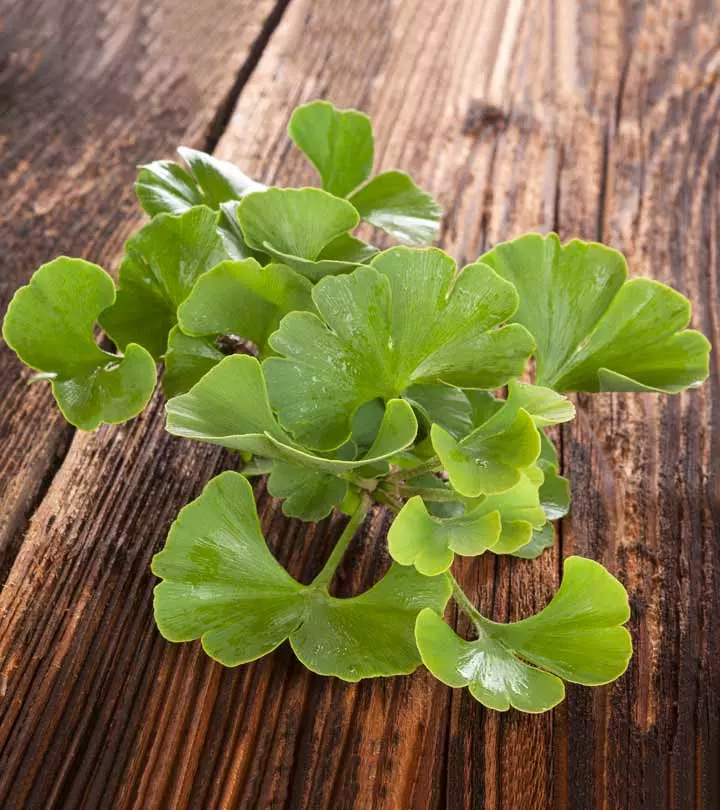
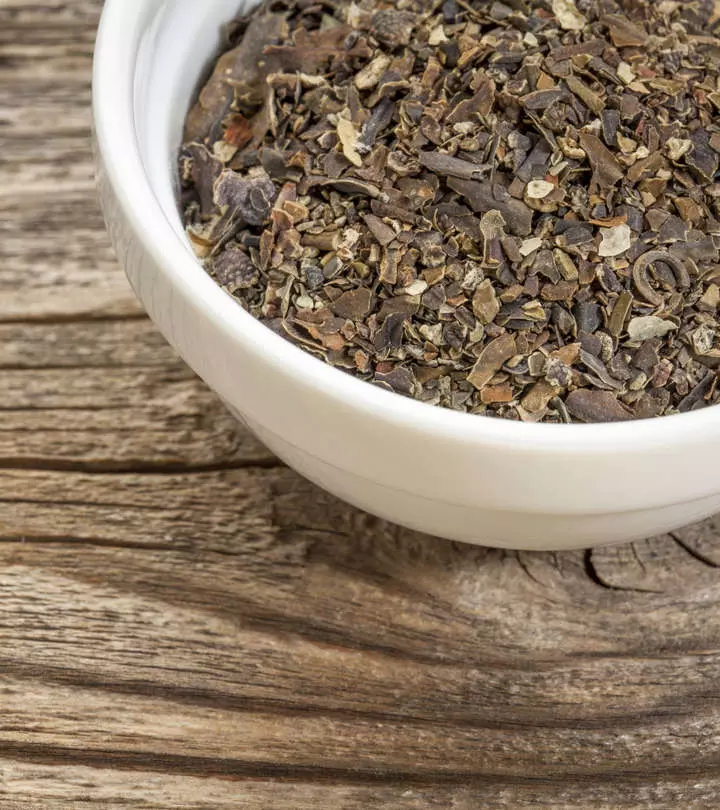
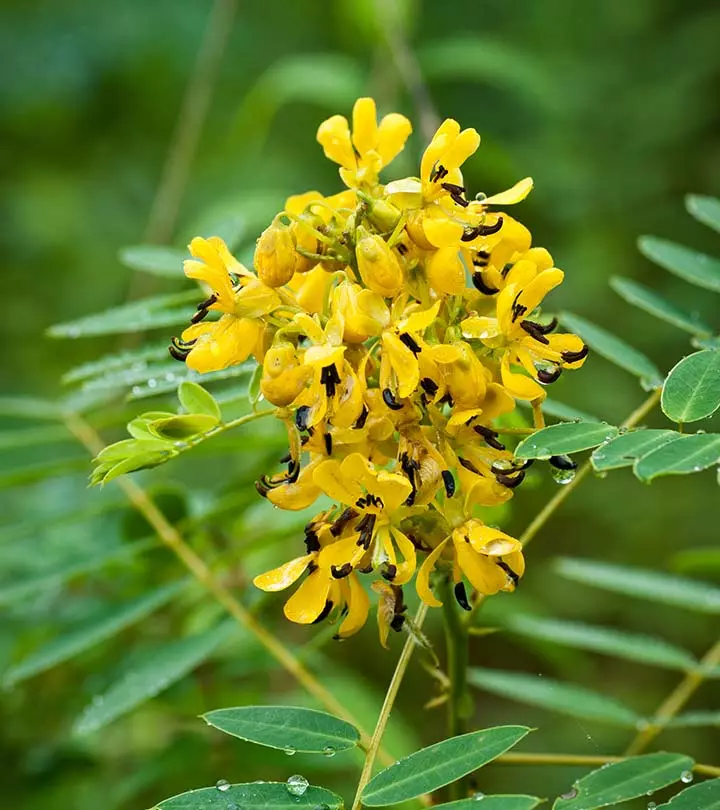

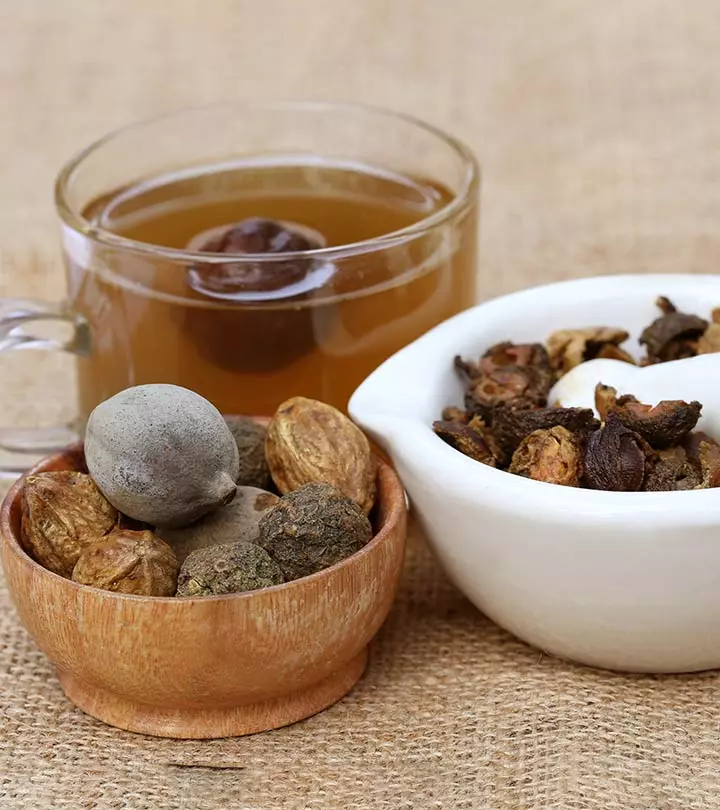
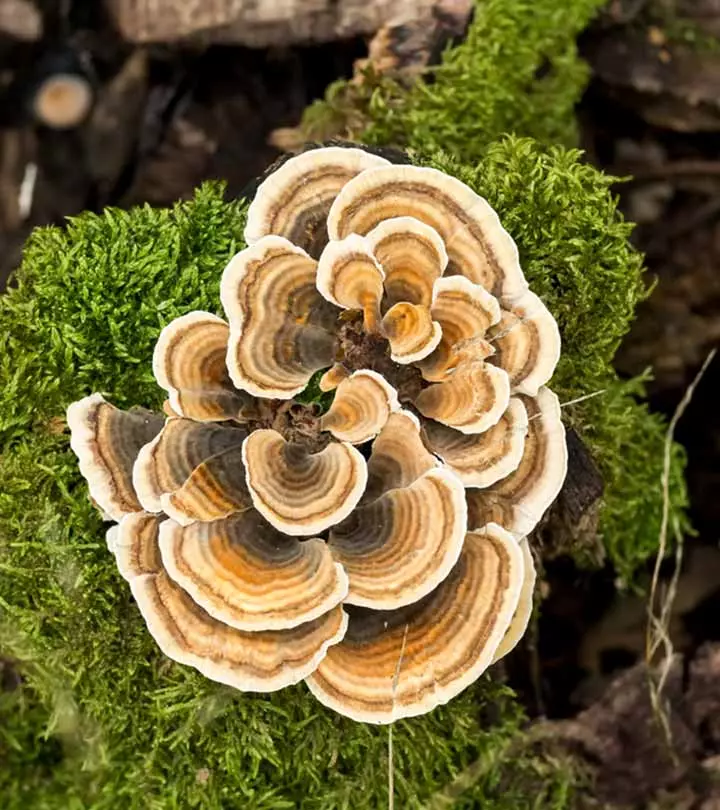
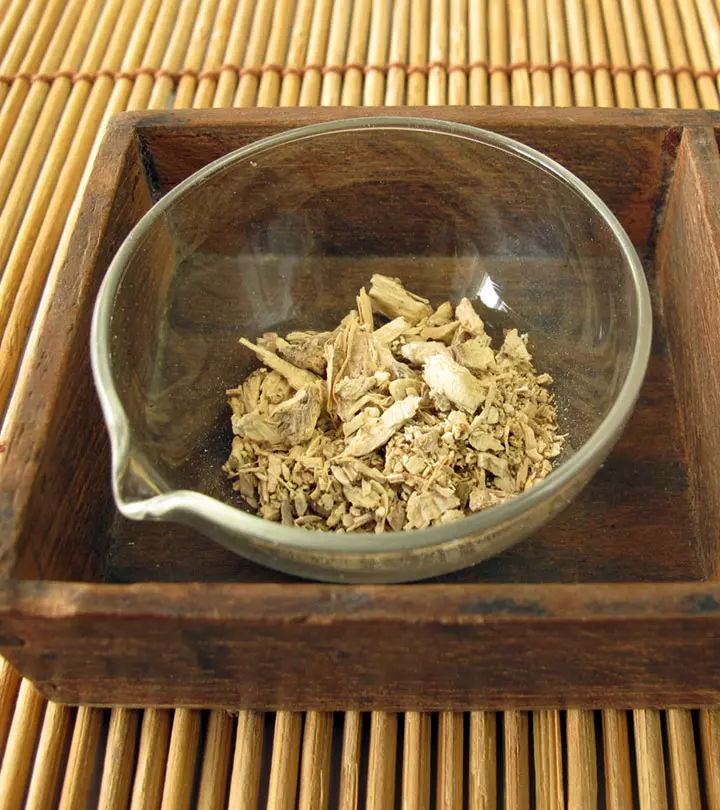
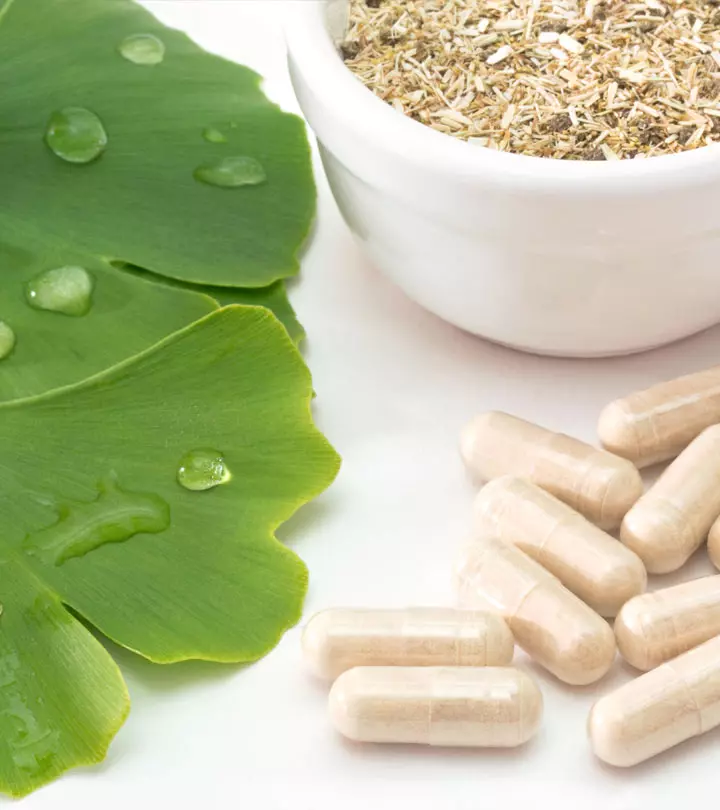
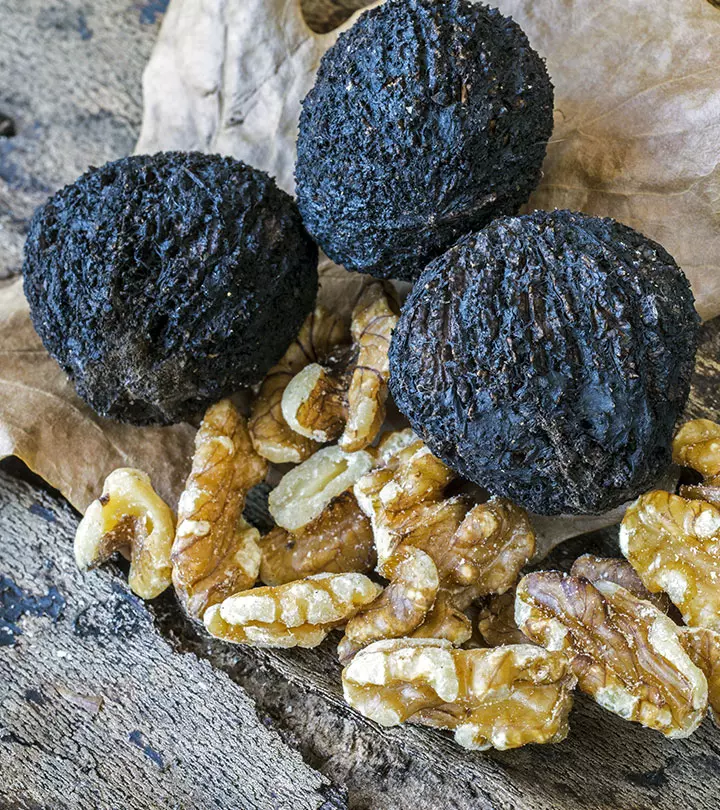
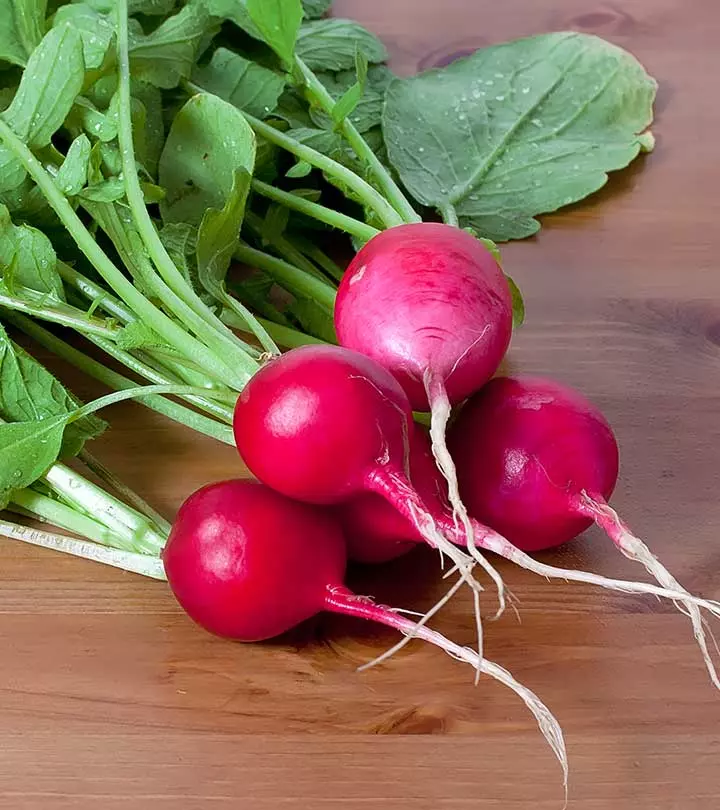


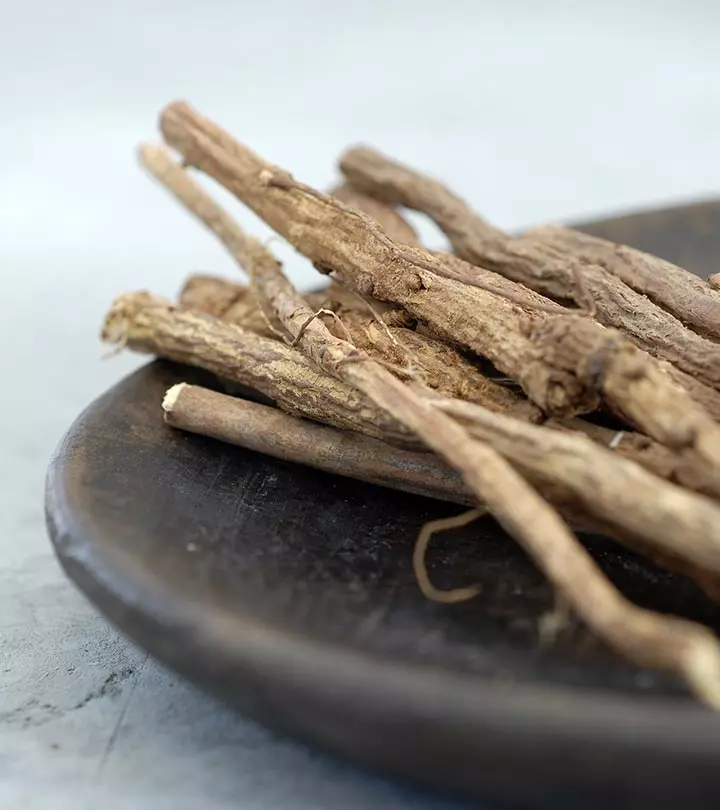
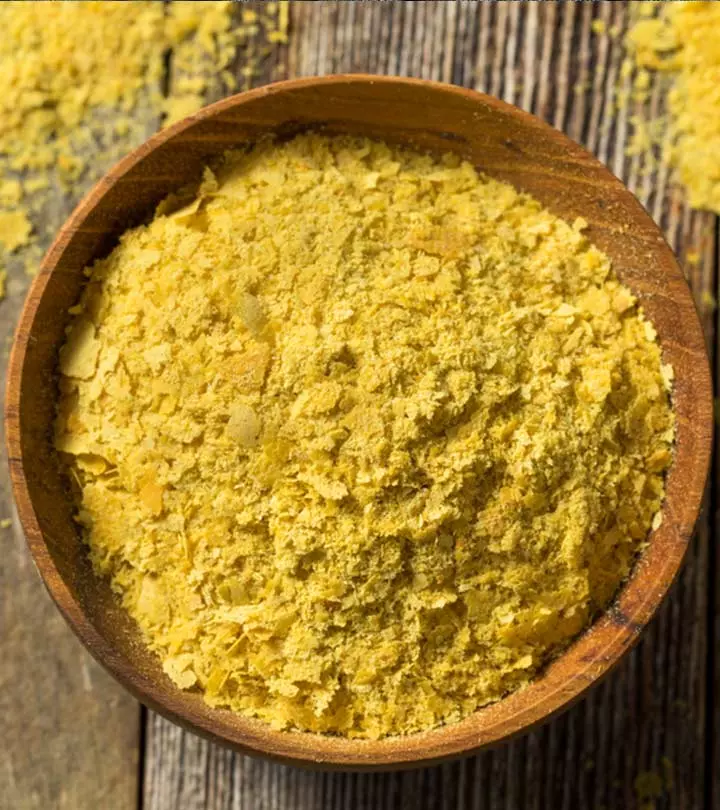
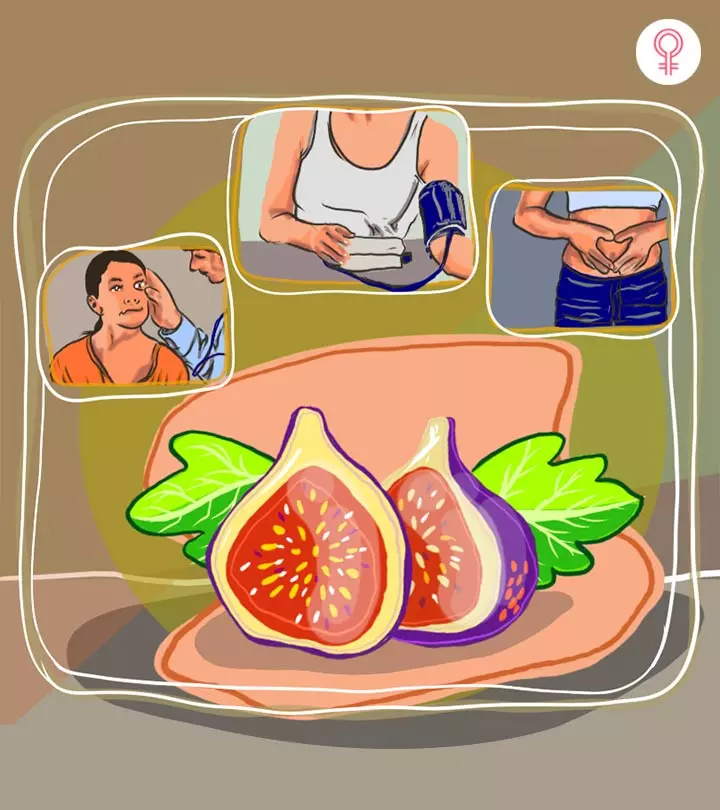


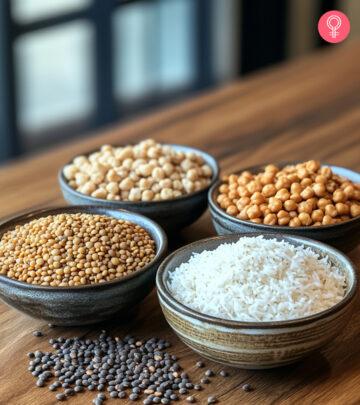

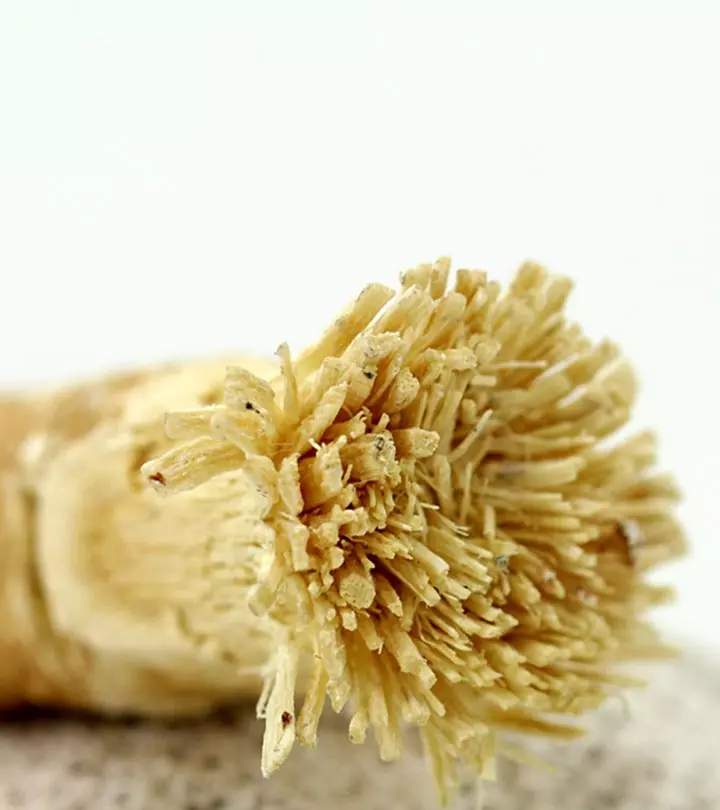
Community Experiences
Join the conversation and become a part of our empowering community! Share your stories, experiences, and insights to connect with other beauty, lifestyle, and health enthusiasts.